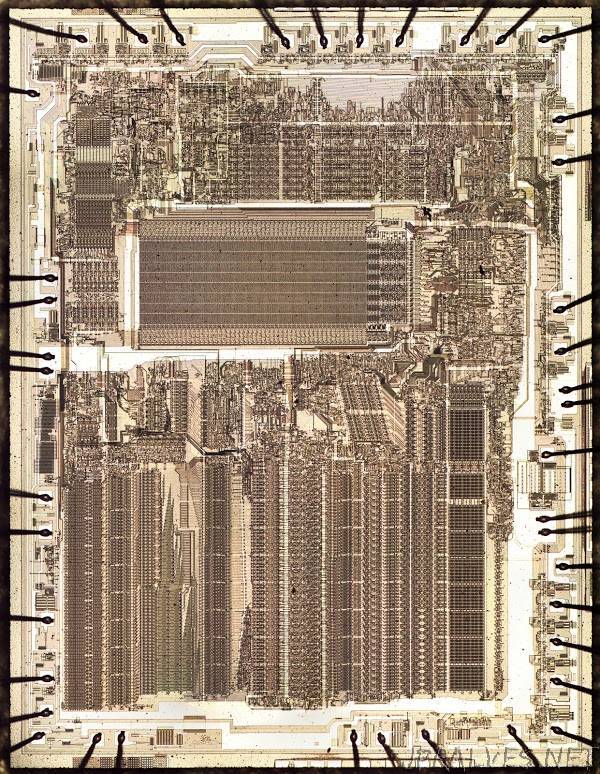
“Looking inside the Intel 8087, an early floating point chip, I noticed an interesting feature on the die: the substrate bias generation circuit. In this article I explain how this circuit is implemented, using analog and digital circuitry to create a negative voltage.
Intel introduced the 8087 chip in 1980 to improve floating-point performance on 8086/8088 computers such as the original IBM PC. Since early microprocessors were designed to operate on integers, arithmetic on floating point numbers was slow, and transcendental operations such as trig or logarithms were even worse. But the 8087 co-processor greatly improved floating point speed, up to 100 times faster. The 8087’s architecture became part of later Intel processors, and the 8087’s instructions are still a part of today’s x86 desktop computers.1
I opened up an 8087 chip and took die photos with a microscope yielding the composite photo below. The die of the 8087 is fairly complex, with 40,000 transistors (according to Intel) or 45,000 transistors (according to Wikipedia). The photo shows the metal layer of the chip, the connections on top of the chip. The thickest white lines provide power and ground connections to all parts of the chip. Hidden underneath the metal are the polysilicon and silicon that form the chip’s transistors.”
